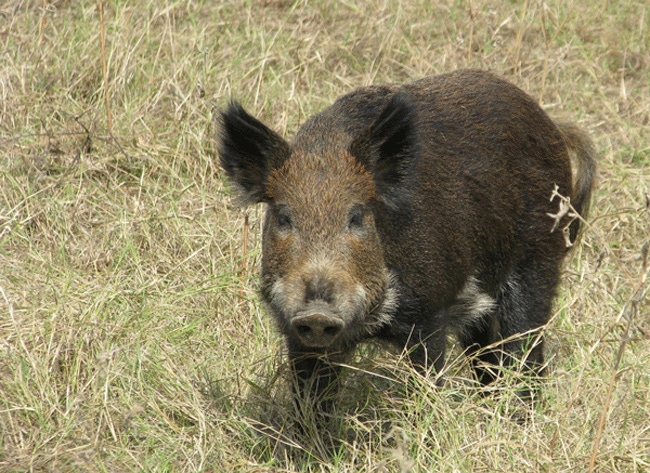
Survey details damage from feral hogs in Georgia
• Of those who responded, 70 percent said feral hogs were present on their land, and 96 percent said hogs had caused damage on their land, including damage to cash crops, fencing, equipment, pastures and landscaping.• The total estimated damage in the survey area in 2011 was more than $57 million. Non-crop damage was estimated at $24 million.
August 10, 2012

University of Georgia Associate Professor and Wildlife Specialist Mike Mengak has presented results of a survey on the impact feral hogs are having on southwest Georgia farms to the Georgia Farm Bureau Board of Directors.
The survey, which received funding from Georgia Farm Bureau, was conducted earlier this year and received 471 useable responses from a group of 1,200 randomly selected farmers who were sent the survey questionnaires.
Of those who responded, 70 percent said feral hogs were present on their land, and 96 percent said hogs had caused damage on their land, including damage to cash crops, fencing, equipment, pastures and landscaping.
The total estimated damage in the survey area in 2011 was more than $57 million. Non-crop damage was estimated at $24 million.
"It's timber and it's food plots," Mengak said.
"People are telling me on the phone and writing in the survey, 'food plots are torn up and they tear down my fences.' So they're doing a lot of damage."
During a Q&A session, Mengak noted that the challenges in dealing with feral hogs are increased due to the animals' reproductive capability; in a year's time, a single sow can result in a population of more than 70 pigs.
Sows are capable of reproducing at six months of age and they can produce two litters of pigs every 13 months and the average litter is eight to 10 pigs.
Mengak said a variety of approaches to hog control are being studied, and there are approaches to sterilizing sows or lethal doses of toxins that are effective. The challenge, he said, is targeting them in a way that overcomes the animals' reproductive capacity while at the same time minimizing effects on other wildlife.
For more information, visit http://www.gfb.org/.
You May Also Like



